Alpine’s A522 showed flashes of promise last year, including an appearance on the front row at the Canadian Grand Prix.
The car was quick enough to comfortably finish fourth in the constructors championship, but they ended up prevailing in a close fight with McLaren, largely because of the number of points lost due to reliability problems.At the launch of its successor, the A523, technical director said the team “set ourselves some aggressive targets” to improve in 2023. “Targets that were going to challenge us, but were going to deliver what we need to do to compete at the right level.”
The team has focussed its attention not only on the reliability problems it encountered, but suspension and aerodynamics changes aimed at improving the car’s efficiency. Facing the same weight-saving problems the entire grid has grappled with, Alpine claim to have been successful, and got the A523 beneath the minimum weight limit of 798kg.
Front wing and suspension
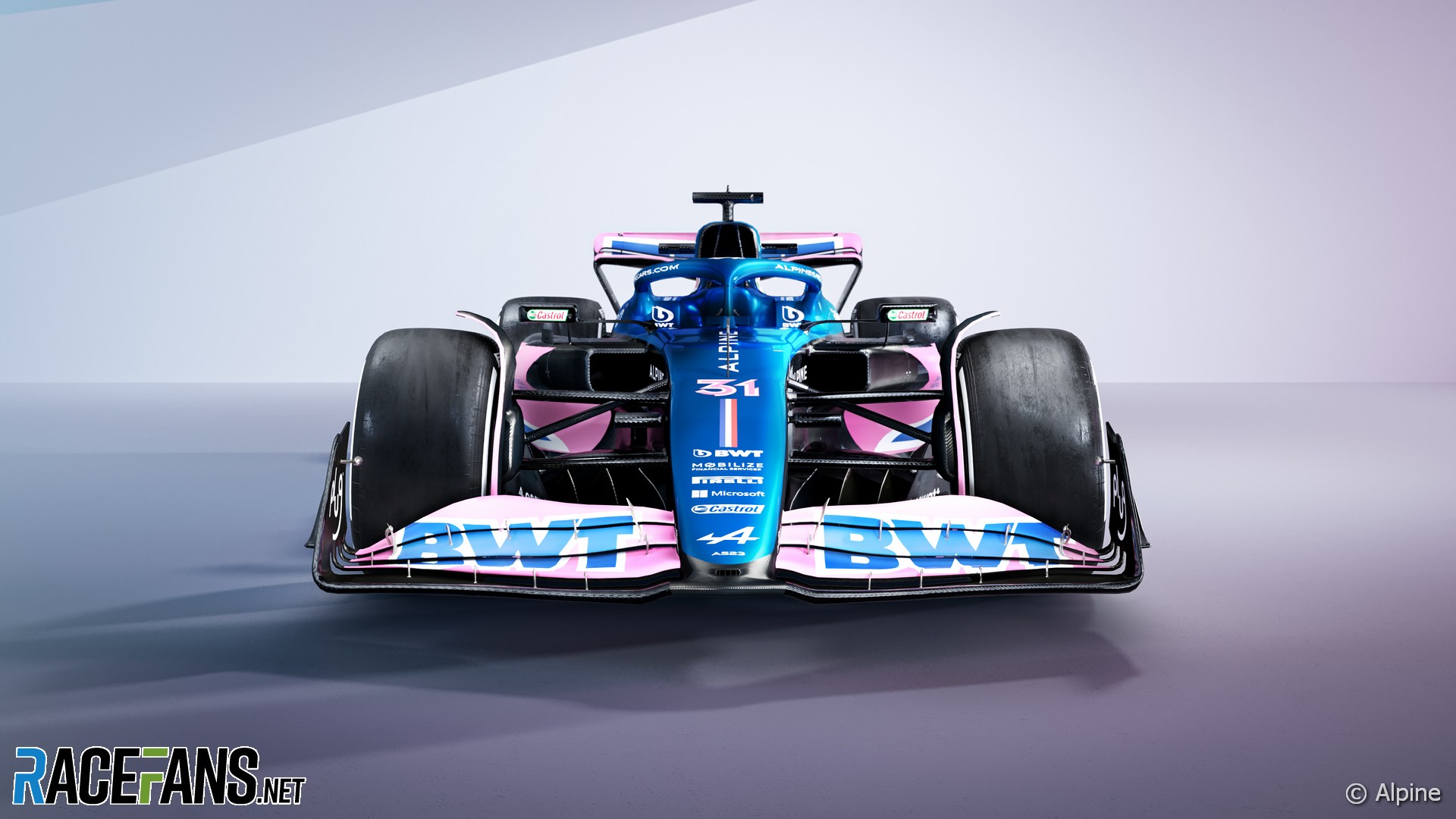
The changes to the front of the car are mainly structural and are intended to allow the team to fine-tune its set-up more successfully, says Harman.
“We started off for the front of the car with the main plane of the front wing. We’ve looked quite extensively at changing the nose concept here. There’s a very different structure in here which gives us more freedom to change more elements of the front wing, particularly more quickly, and allow us to control that air flow more consistently into the front suspension area.”
The A523’s front suspension has been revised in order to improve how it directs the airflow towards the intakes for the floor, which is responsible for so much of the downforce generation on current cars.
“The front suspension control is exactly the same as the A522, but it’s not the same in terms of its kinematics in the way it works,” said Harman. “We’ve changed the position of our wishbones quite considerably – again, to help with that pressure from the flow through that area, to make sure that we present the air to the front of the floor in the right attitude, making sure that we can balance the amount of airflow that’s going both over the top of the floor and into the diffuser itself into the front fences.
“We’re always controlling that distribution of mass flow between what goes to the rear of the car and what gets out-washed outside.”
Advert | Become a RaceFans supporter and
Floor and sidepods
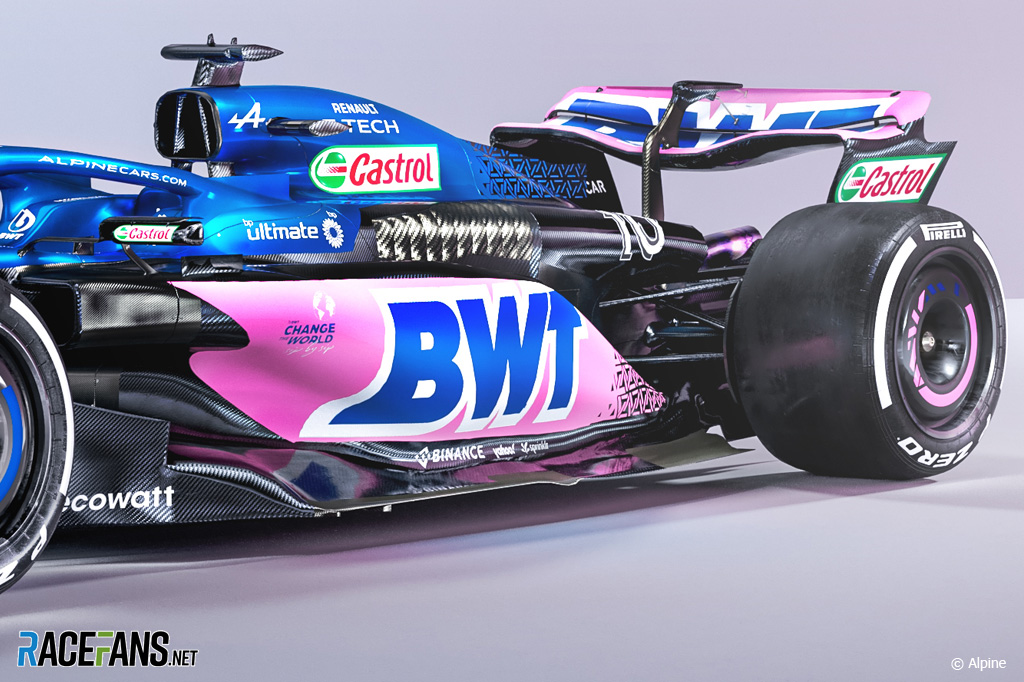
Now 12 months on from the introduction of drastically revised aerodynamic regulations, Harman says there are still big gains to be found from the floor area.
“This is going to be quite a big hunting ground for us through the season as we look to continue with that very aggressive development pace with the car,” he said. “We developed this quite considerably last year and this year we’ll do the same again.”The channels in the Alpine’s sidepods which were present on last year’s car are much deeper than before. “As you can see, there is quite a deep gully that we try and run that mass flow of air to the back of the car, improving the energy at the rear of the car, which is where a lot of our load is placed.”
Controlling the airflow at the furthest extent of the floor is another area the team expect to make gains. “You will also see a great deal of development on the edge of the floor,” said Harman. “This is something again that will be quite important to us as we develop the floor and we try and control some of those structures there.”
Like all teams, Alpine has also had to digest a revision to the technical rules introduced by the FIA to reduce the ‘porpoising’ some cars experienced last year. As has also been the case for some of their rivals, Alpine have found it hasn’t prevented them finding more downforce.
“The FIA changed some regulations for us, which was very kind of them,” he said. “It actually meant that we needed to lift the floor slightly and that loses some load at the rear of the car, but we gained that back quite quickly. Our aerodynamics department were very good and effective at gaining that back and now we’ve accelerated through that.”
Advert | Become a RaceFans supporter and
Rear suspension
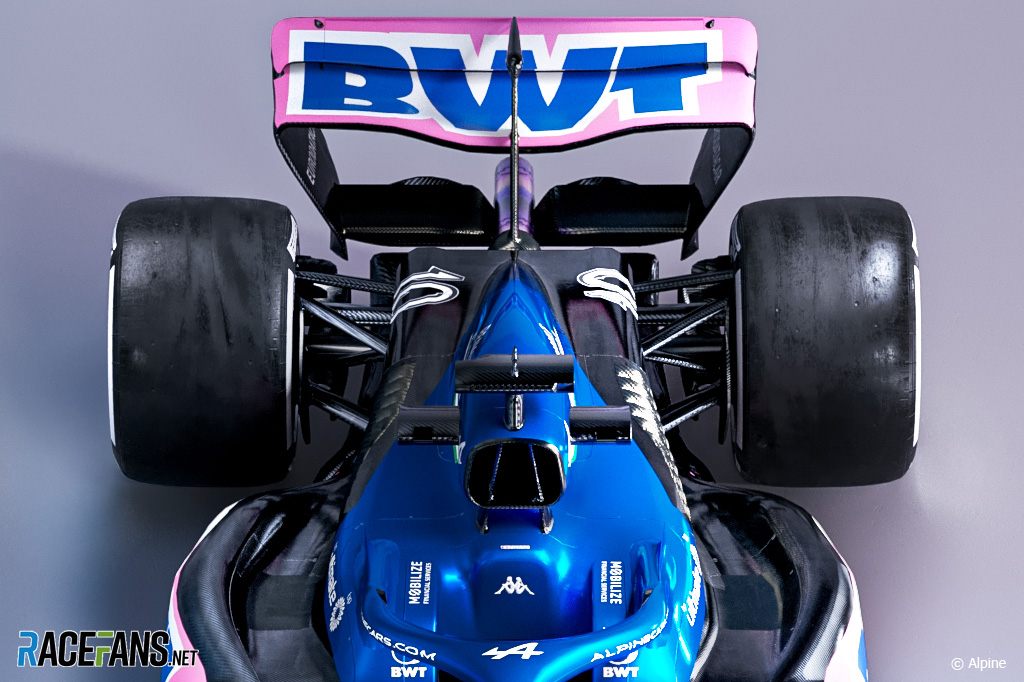
Alpine have made a “big change” to the rear suspension, said Harman. “We’ve changed concepts – we’ve gone from a pull-rod rear suspension to a push-rod.”
The difference between the two can be seen by comparing the rendering above to the team’s previous car below. Harman says it has been done “for quite a few different reasons.”
“Firstly we need to take some weight out of our car and we did have a very interesting concept for last year, but this one is more interesting,” he explained. “It’s a little bit simpler with the push-rod and it’s allowed us to take an awful lot of weight out of the rear of the car.
“Also, we’ve put a little bit more complexity into the inboard system, such that we’ve got more modularity for our trackside engineering teams. We need to give them tools to be able to set up the mechanical balance of the car and that’s what they have.
“But most importantly, we’ve controlled the airflow through here. It’s much cleaner, there’s less blockage, so that we can get more air out through the rear of the car. That’s really, really important and it’s going to be a good development for us as we move forward.”
Advert | Become a RaceFans supporter and
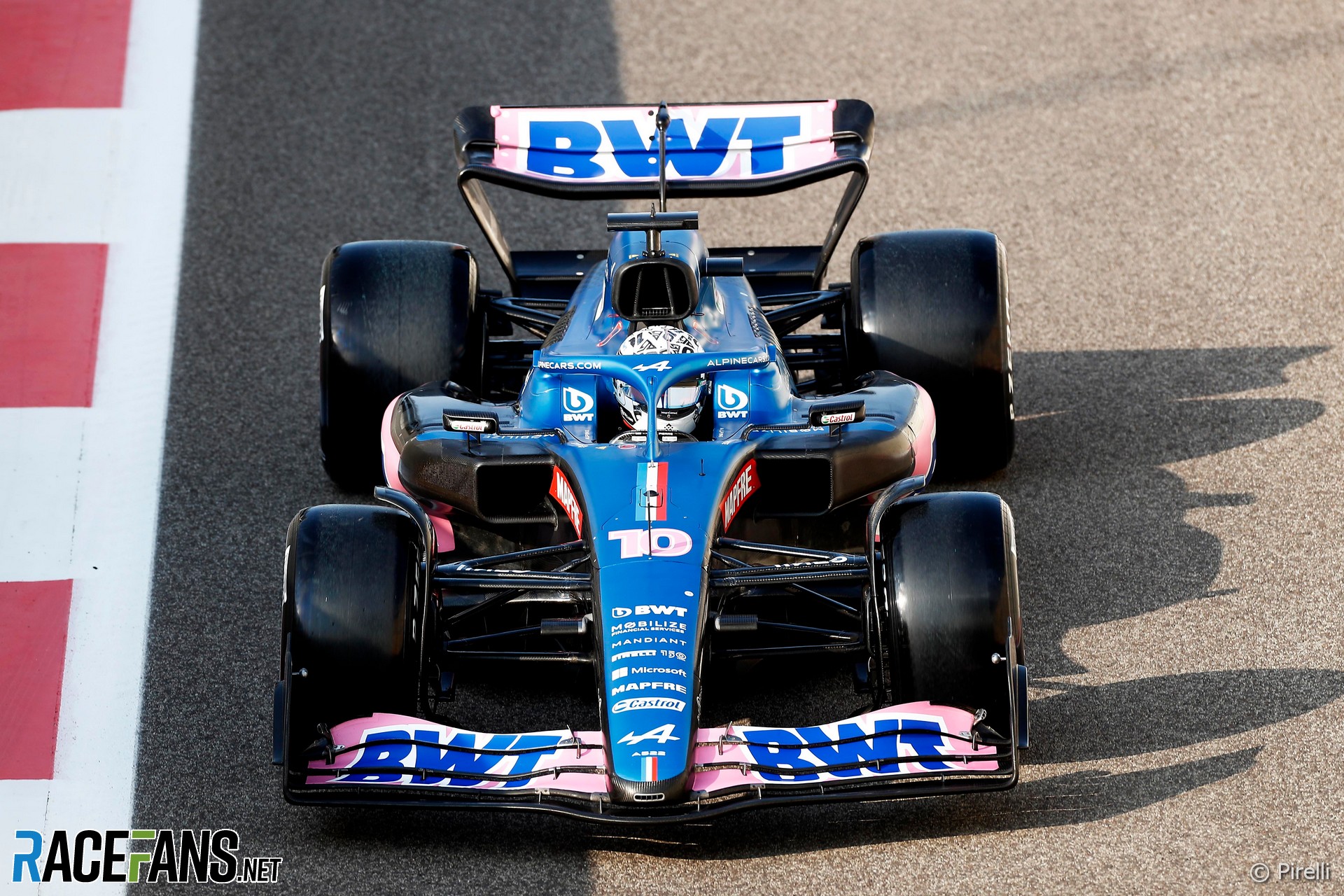
Rear wing
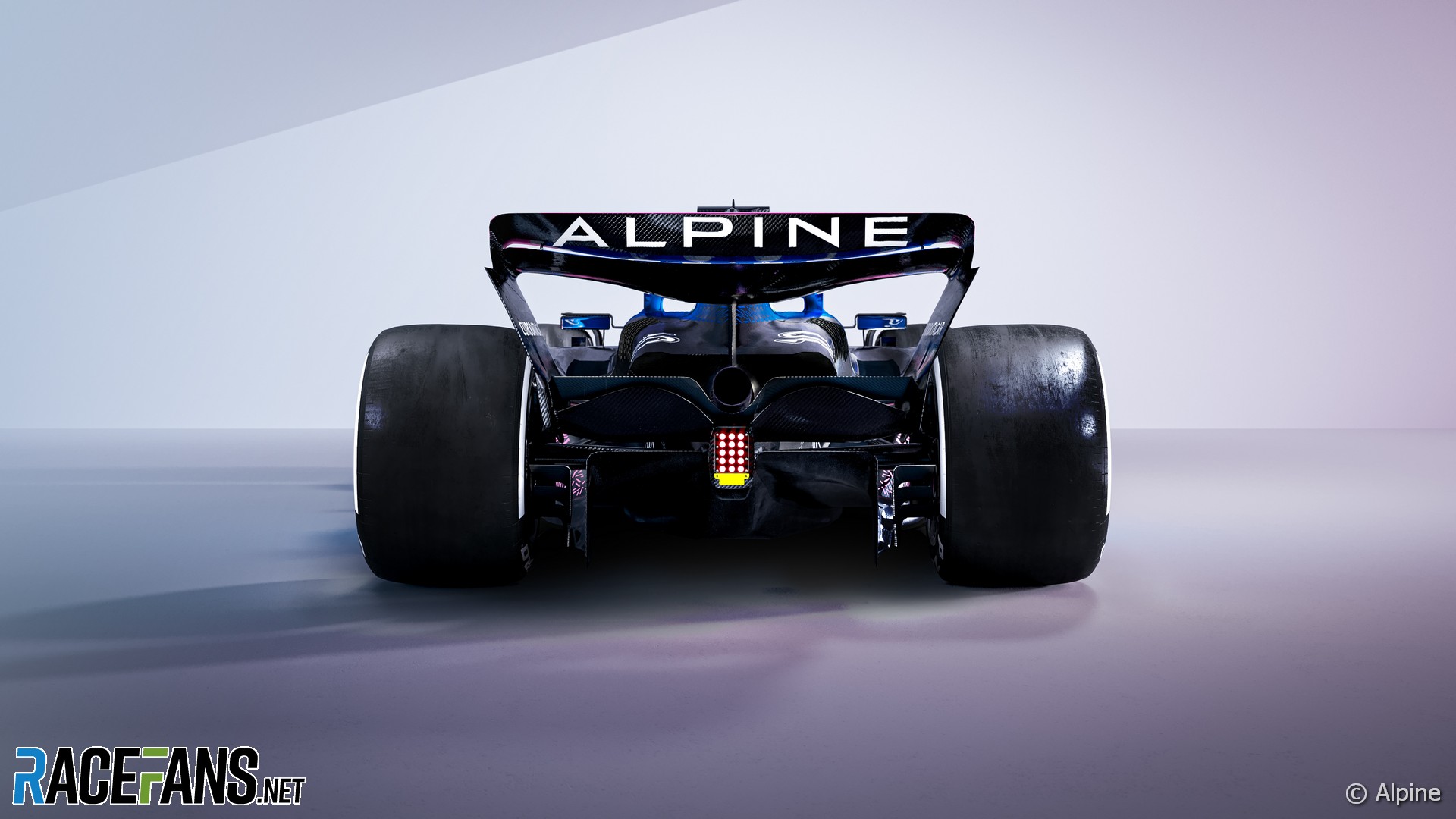
Another efficiency change is found at the rear of the car. “We have a few rear wings through the year as we go through different races, but it’s all about efficiency,” said Harman.
“So we’re trying to make sure that we have a similar or more load at the rear wing, but a much greater efficiency – so less drag. And the way we do that is by optimising the beam wing, which is the lower section of the rear wing, that allows us to make sure that we’ve got that lowest drag in the car.”
Weight reduction
One challenge common to all teams was the need to save weight. Last year many of them removed paint from their cars in a bid to get the weight down.

Alpine presented their A523 in two different liveries, both featuring a mixture of painted and unpainted areas. Herman says the team’s weight loss efforts have been successful.
“We needed to take weight out of the car,” he said. “We’ve had a very aggressive weight reduction program and it’s really pleasing to be able to say that the car will be underweight this year.”
Getting beneath the limit means they will have to add weight to reach it, but they have the freedom to use that to the benefit of the car’s handling.
“We will have ballast in the car and we will be moving it around to optimise that weight distribution, which, again, is a fantastic performance tool for us and our trackside engineering teams,” he said.
Advert | Become a RaceFans supporter and
Power unit reliability and cooling
When Fernando Alonso’s car broke down in a cloud of smoke during pre-season testing last year, it proved a sign of things to come. Alpine’s season was blighted by reliability problems, mainly due to the power unit. Alonso bore the brunt of them, and decided mid-season to leave the team.
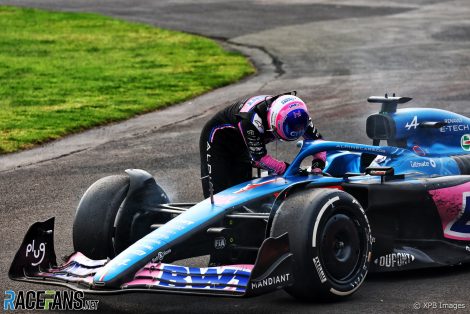
“We’ve worked on that together, collaboratively with my colleague Bruno [Famin, engine chief] and his team at Viry to make sure that we’ve got that reliability back, that we give ourselves the best chance of ensuring that we finish those races.
“Actually, we very recently run the car on a full powertrain dyno configuration and done an extensive amount of mileage, which is basically where we run the whole car on a dyno and check it. And that was very, very good. There’s a lot of confidence in that great piece of work that we’ve done together, collaboratively has shown some great benefits.”
Engine specifications have been frozen since the start of last year, except where teams need to make changes to improve reliability. However Alpine have been able to improve the interaction between the engine and the rest of the car to find performance gains.
“We’ve also looked at changing some of the aerodynamic-affecting components. The heat rejection system, for example – the cooling systems, it might be more commonly known.
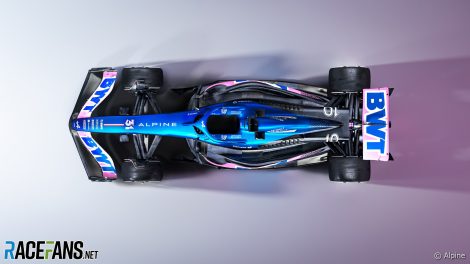
“So actually we’ve removed it from there, but we’ve not put it in here – we’ve made the system smaller. And also we’ve managed to reduce the plenum temperature of the engine as well, which, again, gives us not only an aerodynamic benefit but more crank power.”
Alpine need to make a significant step to operate at the same performance level as the three teams which finished ahead of them last year. But curing those reliability problems should at least help them to be in a position to capitalise on dramas ahead of them, which they too often failed to do last year, and deliver the occasional podiums Renault CEO Luca de Meo said he is hoping to see.
Advert | Become a RaceFans supporter and
2023 F1 season
- FIA president cleared of alleged interference in two 2023 races
- First week viewing figures for new Drive to Survive season fall again
- Max who? Drive to Survive season six prefers its favourite faces
- RaceFans’ complete 2023 season review
- The F1 drivers who pulled off the 10 biggest charges through the field in 2023




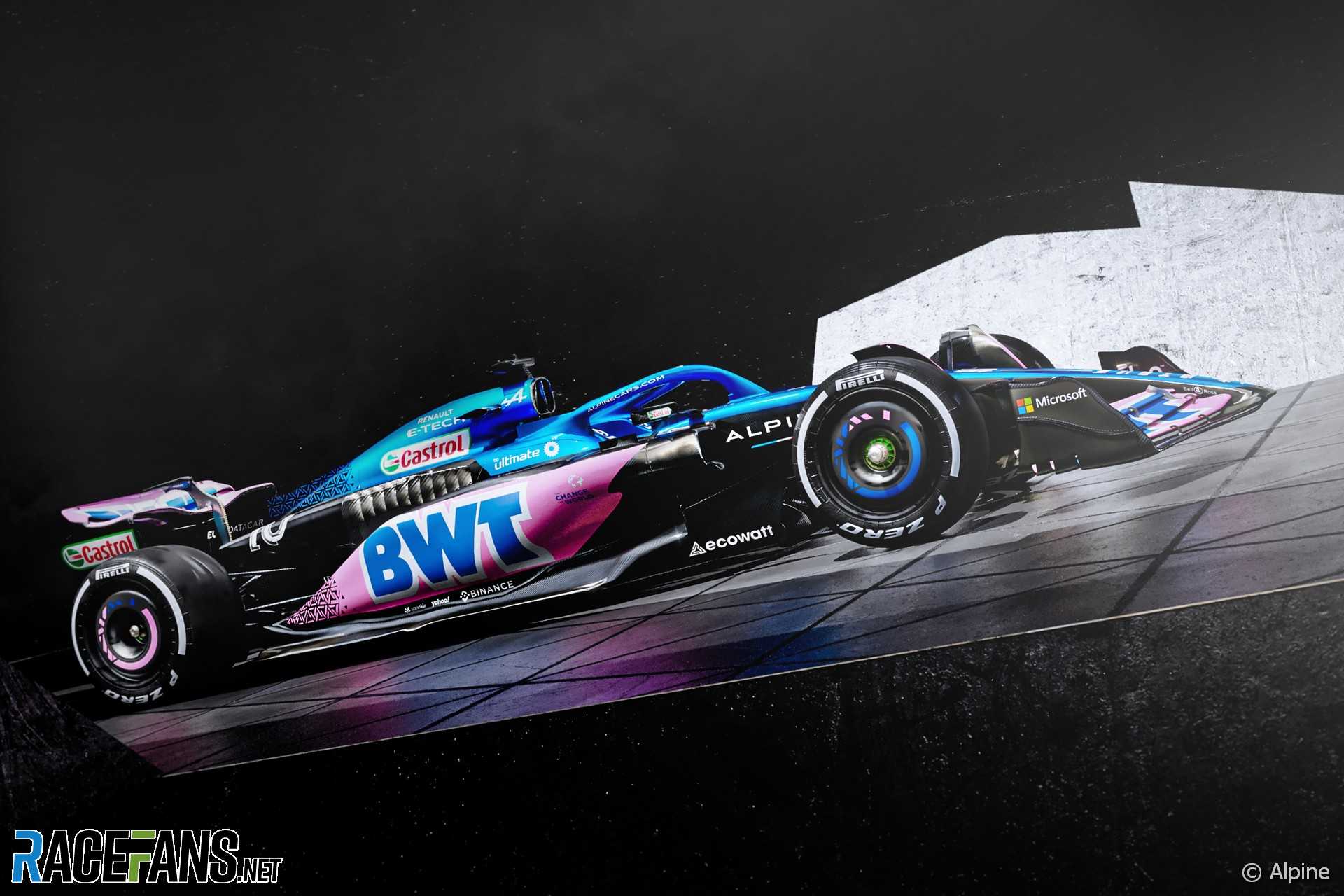
The Dolphins
17th February 2023, 1:22
I’m genuinely interested in the technical development of the A523, and as underwhelmed as I am with their driver lineup I wish them success.
Jere (@jerejj)
17th February 2023, 6:12
The upcoming minimum car+driver weight requirement remaining at 798 kg, after all, is all but confirmed, with only FIA’s formal ratification left, which I’m confident will happen in time for the season-opener.
Even though this tone change is solely about tyres, perhaps some teams could(‘ve) got down to 796 too, but of course, those teams get punished for doing a better job, like AR when 795 changed to 798.
Nevertheless, keeping last season’s equivalent is equally more than welcome after several consecutive seasons of changing between each season rather than keeping a stable figure for consecutive seasons, which happened most recently from 2015 to ’16.
MacLeod (@macleod)
17th February 2023, 8:00
You never get punished if you weight is below the minimum as you can use ballast and a lot of people underestimate the importance of ballast (the kind you can use to setup your car).
I always thought Ballast was bad untill some engineeers explain me what they could do to balance the car much beter.